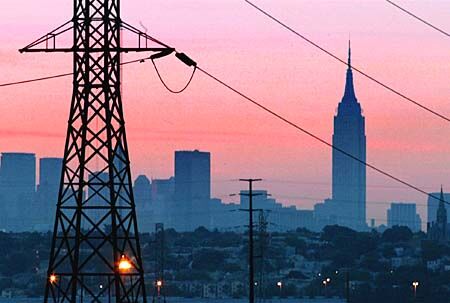
Light Rail Now/Light Rail Progress can be contacted at: Light Rail Now! |
Frank S. Miklos is current presdient of the Electric Railroaders' Association.
In reality, it was not only the electric transportation system that was affected by the blackout: motor vehicle transportation was seriously disrupted as well. Particularly in the major cities hit, virtually all roadways became parking lots because the traffic lights went out and the intersections became gridlocked. Motor vehicle tunnels such as the Holland and Lincoln Tunnels connecting Manhattan to New Jersey also had to be closed because their ventilation systems are powered by electricity. Gas stations were rendered inoperable because the pumps are electrically powered. Driving after dark became more hazardous because of limited visibility due to street lights being out.
In the case of electric railway systems, reports suggest that the power supply for the operation of the trains was generally not affected because it is independent of the grid. However, the power for the signals and switches comes from the regular commercial sources along with the power for the platforms in the subway stations. According to newspaper reports, some rail service out of Penn Station to New Jersey was provided as early as 7:30 PM.
Clearly, without the subways, New York City would have to widen the sidewalks and reduce the number of traffic lanes. in effect, the power blackout of August 2003 helped provide another example of how motorists would be worse off without good reliable public transportation. Updated 2003/08/18 |
|
|
|